Making an Effective Short Presentation
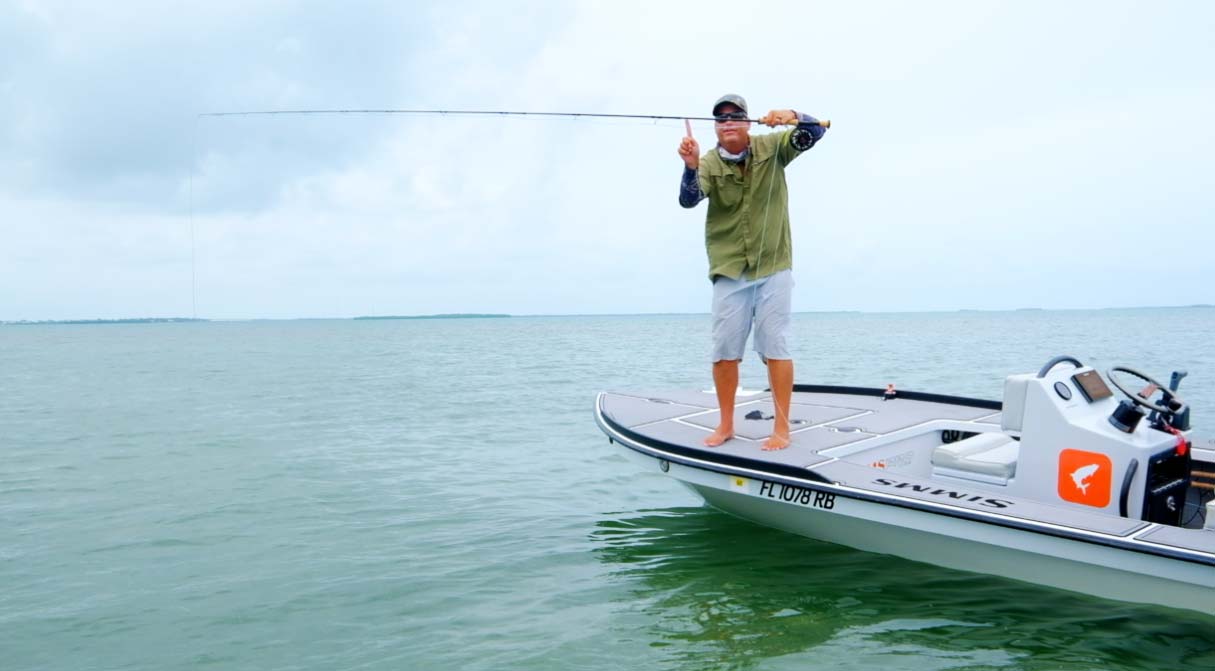
Most angler worry about casting distance, but an effective short cast is often the most challenging.
I once heard a captain say, “If you think casting a fly rod a hundred feet is hard, try casting one ten.” There is a lot of truth to that. I often see anglers struggle and fail with the short presentation. If you can learn to do it well, it will catch you a lot of fish.
This is never more true than when flats fishing. When disability is tough the action can get very close. Even big fish like tarpon can suddenly appear at your feet. The ability the make a short presentation, which is quick, accurate and free of slack can turn frustration into triumph.
I don’t know anyone who teaches this better than Bruce Chard. In this video Bruce goes over the fundamentals of making a tight loop and a perfect presentation with a short line. Put these tools in your bag and you’ll fish like a pro.
WATCH THE VIDEO AND LEARN TO MAKE A SHORT, ACCURATE, SLACK FREE PRESENTATION.
Read More »Your Odds Go Way Up When You See The Fish
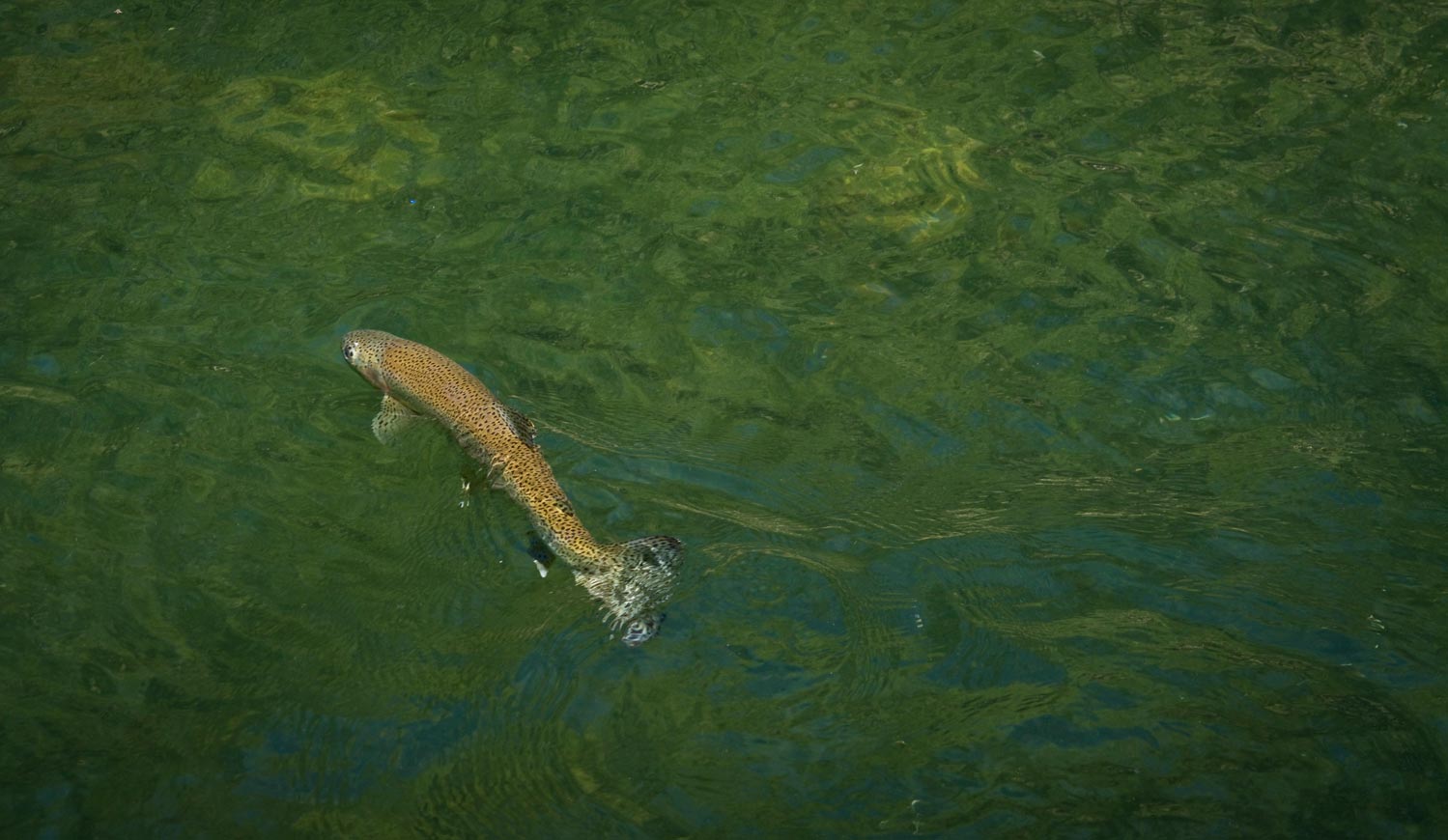
Seeing fish equals catching fish.
More than casting. More than fly selection. More than any other skill, one thing separates highly effective anglers. The ability to see fish.
I don’t care if it’s tarpon or trout, bonefish or bass, seeing the fish is the best first step to catching the fish. For some species it’s absolutely crucial. Seeing the fish allows you to plan your presentation, observe the fishes behavior and know with 100% certainty when it has eaten your fly. It’s the difference between winging it and applying real skill and technique. There is no substitute for this tactical advantage.
Far too many anglers start with the assumption they can not or will not see fish. And they don’t, either because they don’t have the confidence or because they don’t try. If you slow down, and take the time to look, you will find a world of possibilities opens up.
REASONS YOU SHOULD SPEND MORE TIME LOOKING FOR FISH
edit-7290-2-2•Spotting fish allows you to plan your presentation. Get in the right position, get your rid dialed in, figure out how far you need to lead the fish or how to get the best drift.
•Watching fish let’s you
Read More »Hopper Time: 6 Favorite Patterns
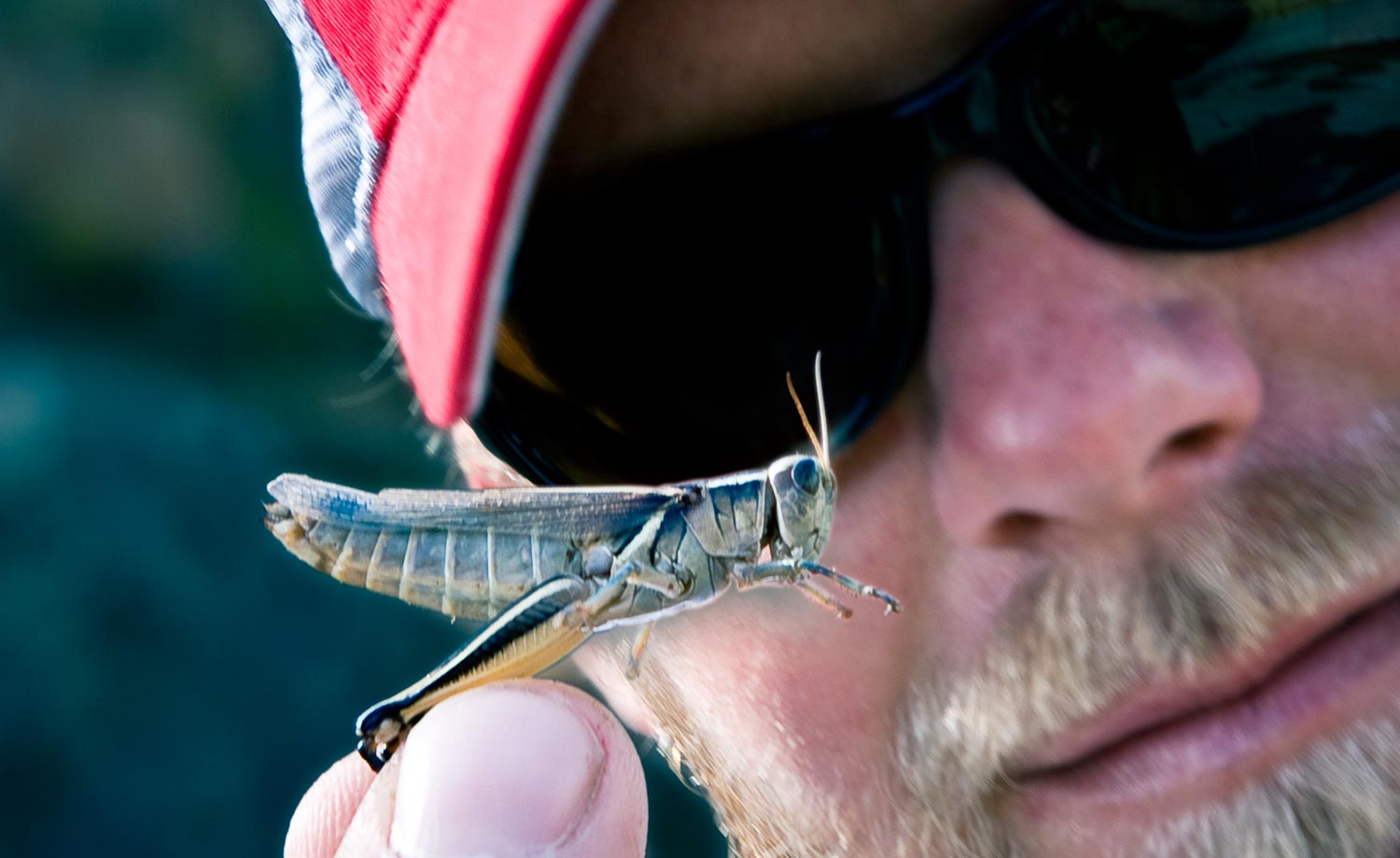
By Louis Cahill
What time is it boys and girls? Time to fish hoppers!
I don’t know if there is any kind of trout fishing more rewarding than fishing hoppers. Big bugs and big splashy takes under sunny summer skies. It doesn’t get much better than that. I’m headed west in a few days and it has me looking over my terrestrial box for the usual suspects. With that in mind, I thought I’d share what I’m thinking.
Here are my current 6 favorite grasshopper patterns
Dave’s Hopper
I’m going old school for my first choice. I’ve been fishing this fly for as long as I can remember and it works as well today as it ever did. No space-age polymers in this baby but it sure gets eaten.
Reeces Beefcake Hopper
Where’s the beef? Right here. This spindly bug rides low in the water like the real thing and is tough as nails. It needs to be, ‘cause it gets chewed on.
Parachute Hopper
Another classic, but I have caught so many fish on this fly I can’t see taking it out of the rotation. It’s an easy pattern to tie as well.
Hog Caller Hopper
If this doesn’t get their attention, nothing will. A bright foam pattern that
Read More »Carp Are Not Bonefish
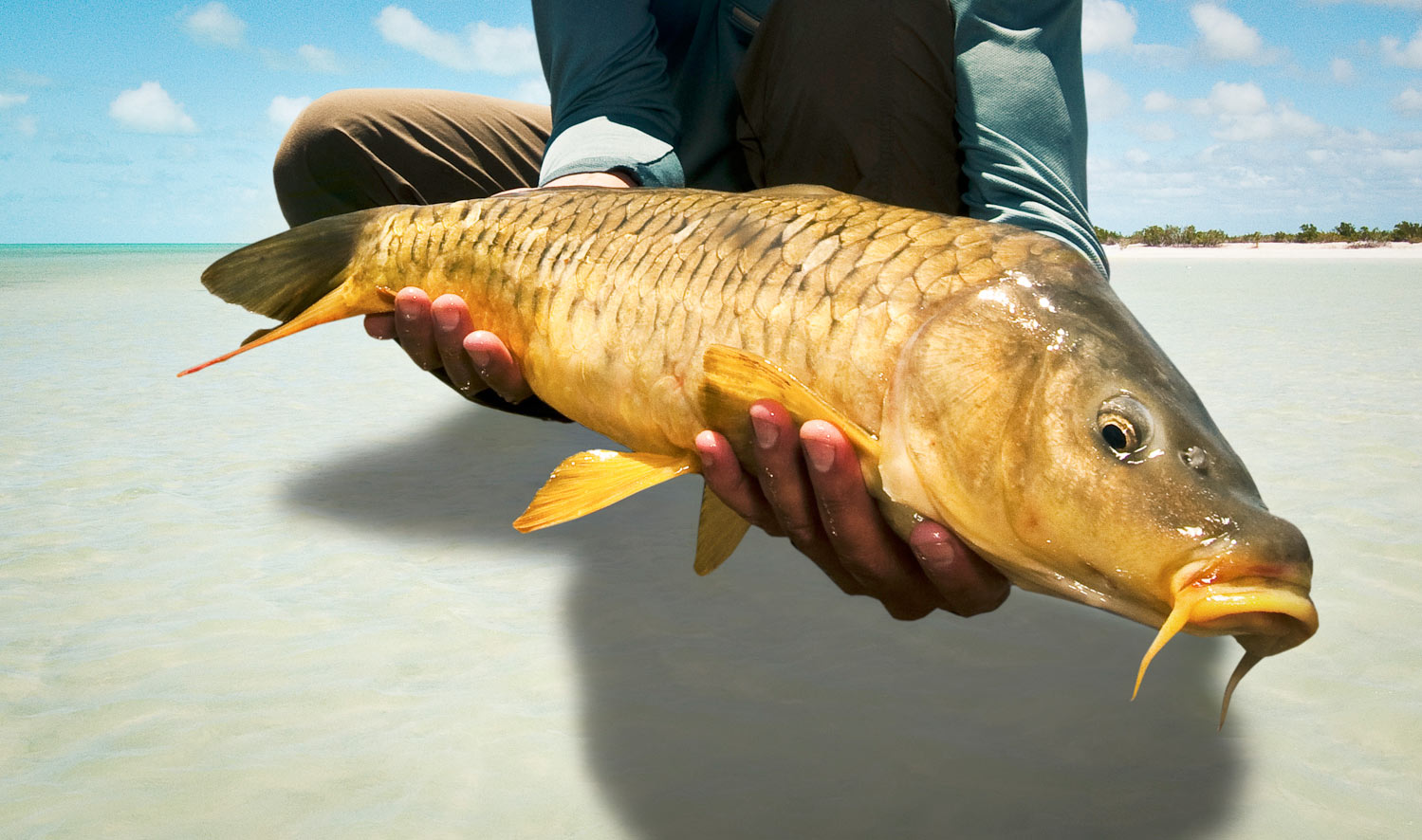
By Dan Frasier
Hardcore carp nuts are hard people to like.
We’re argumentative, sensitive about our fish, and contentious. We’ll assume you’re insulting the fish we love so much; taking offense to the most innocuous statements and won’t hesitate to demean whatever quarry you choose to pursue. I was once heard saying, “Trout are the pretentious man’s bluegill.” Things like that. For the record, I later apologized because I love trout and the dude I was yelling at didn’t deserve it either way. But this defensive nature begs the question, “How the hell did we get like this?”
The answer is pretty simple. We spent years fishing in the shadows. Lying about what we were chasing or being derided for chasing them. To this day, I catch shit nearly every time someone asks me what I’m fishing for. When we finally decided to come out of the closet, it was mostly to derision and smirks. We caught fish, posted pictures and spent a fair amount of time fighting off the hate that comes with fishing for something that people have been misinformed into believing destroys the water quality and reduces the populations of real fish. It was a rough time to be a carper.
About 10 years ago a man by the name of David McCool, in Traverse City Michigan, coined the term “Golden Bonefish”.
David was a marketer by trade and guide in his free time and he wanted to “rebrand” the carp. He decided the first order of business was associating carp flyfishing with something more palatable to, what can be, a snooty and exclusive audience. Don’t believe me? Tell a flyfishermen you put a worm on your hook and cast it with a flyrod and see how exclusive we can be. Anyway, David got some notoriety and the association with Bonefish stuck. In a lot of ways, it was the crack in the flyfishing world’s defenses that we needed to come barging in. And it worked.
David fished the crystal clear sand flats of Lake Michigan near Traverse City on Traverse Bay. Hell, he probably still fishes there. I’ve lost track of him. The point is, his fishing was wading knee deep flats over sand in bathtub clear water while looking for shoals of fish cruising and tailing on small baitfish. He was bonefishing… for carp. It just made sense. And you can still bonefish for carp. I’ve done it. You have to get a boarding pass to a select number of destinations at the right time of year to do it. But it’s available. So David wasn’t wrong. He simply didn’t understand the diversity of conditions under which we would eventually find ourselves flyfishing for carp.
To this day, the association with bonefishing persists. People discuss using carp as training for bonefish trips, or inevitably try to sell flyfishing for carp as bonefishing in freshwater. It’s such a flawed notion it doesn’t make all that much sense.
Flyfishing for carp is so ridiculously
Read More »3 Ways to Improve Your Fly Casting on the Flats

About ten years ago, I embarked on my first international saltwater fly fishing trip, with a couple Texas boys I’d previously met while chasing peacock bass in the Amazon. The saltwater trip took place down in Mexico, specifically the Ascension Bay area. Our primary target fish were bonefish but we kept a constant lookout for permit and tarpon. The two born and raised Texas boys had grown up fly fishing in the salt, and they both had more than enough testosterone, ego and skill to handle the demanding fishing conditions. I on the other hand, had never experienced first hand the difficulties that saltwater fly fishing brings. I really struggled with spotting fish in an unfamiliar environment and managing my presentations in 25 mph winds. I’ll never forget the humbling feeling of defeat after our first day of fly fishing on the flats. My counterparts landed a dozen bonefish a piece while I only managed to catch one. Just about the entire trip I was plagued with the feeling of being under-gunned on the water. The wind totally kicked my butt and I missed numerous opportunities because I couldn’t cast far enough to consistently get my fly to the targets my guide was calling out.
At the time, the only problem I saw in my fly casting was I didn’t seem to have nearly as much power in my casting stroke as my buddies. That was true, but the real problem was I didn’t have the competency to diagnose what I was doing wrong and neither of my buddied did either. All they kept saying, over and over to me, was that I needed to work on my double-haul.
Read More »Fly Fishing: Swinging Streamers for Trout in Deep Water
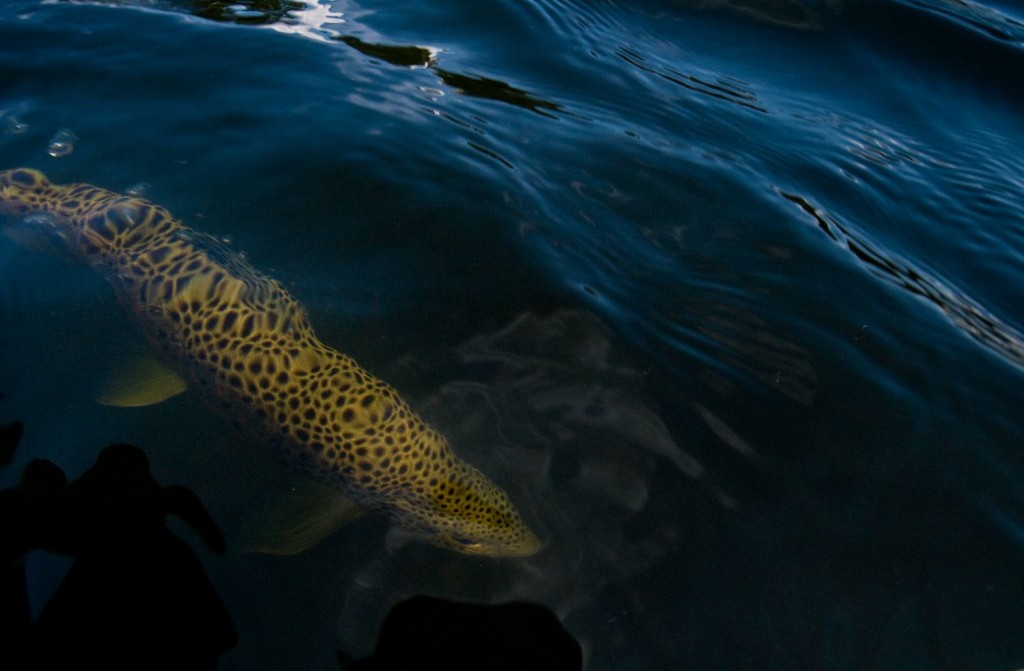
Most streamer fisherman out there would agree that pounding the river banks with a streamer will catch trout just about anywhere. If you’re willing to put in the time and hard work, eventually you’ll be rewarded with a big fish. During high water flows on rivers where habitat is insufficient out in the main river, many trout will relocate to the banks where they can use the irregular banks and it’s abundant cover to shelter themselves out of the excessive current. There next move, once they’ve gotten to the banks, is to find prime ambush spots where they can easily pick off prey moving by. This is why casting to the bank and ripping streamers back to the boat is so effective. You’re repeatedly putting your streamer right in the kitchen where good numbers of fish will be holding and regularly feeding.
The majority of the time, this scenario works great, but what do you do when you find yourself in areas where the water is super deep and the fish are sitting on the bottom? These places make it extremely difficult for anglers to keep their streamers down deep in the strike zone while using the pounding the bank technique. Even with a full sinking fly line the cards are stacked against you. Don’t get me wrong, it can still work at times, especially if you cast upstream of your target water, throw couple of big mends, and give your streamer time to sink before you begin your retrieve. Unfortunately, in many situations, you won’t always have the time or the room to pull this technique off, and that should have you searching for an alternative fishing method that’s better suited for fishing your streamers in these deep water locations.
Read More »Alice’s Angle: December
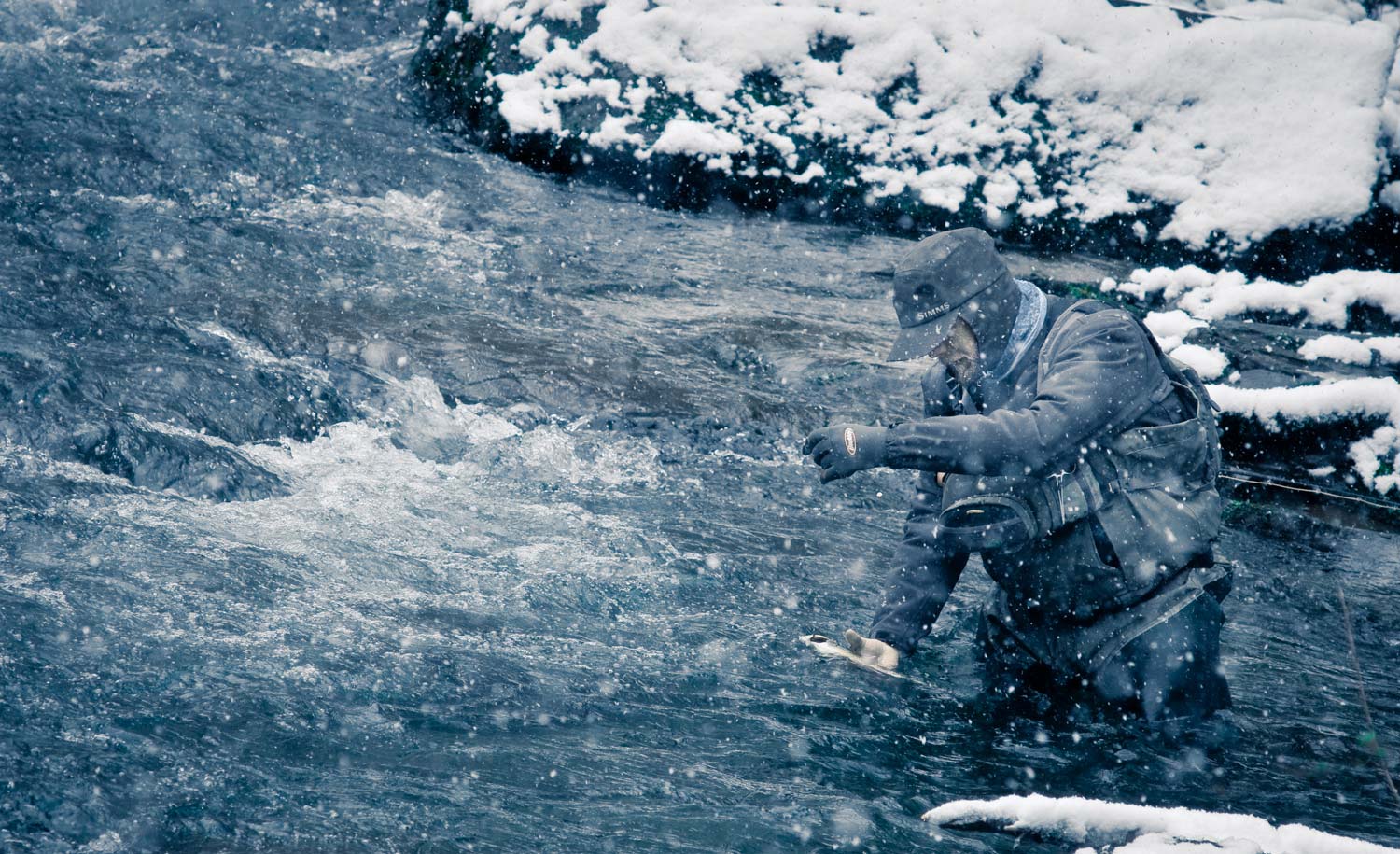
By: Alice Tesar
December, the mountain slopes are open to skiers and the rivers are practically void of anglers.
Not only is hitting the river an excuse to escape holiday guests but it can also be quite productive if you’re willing to endure the cold factor. If you know me, you know I’m a nymphing fool. Streamers and dries are exciting but mastering a nymph rig that catches trout with each presentation feels invincible. Most mountain town rivers are running low and uberclear right now. Furthermore, blue skies and snowy banks make your shadow and own presence on the water louder than ever. To avoid spooking more fish I recommend wearing muted colors and limiting your false casts, I even let my drifts go longer in an effort to slow down my above water activity.
Regardless of spooking easily, the trout is at its laziest in cold water. They are lethargic and prefer to place themselves where currents are easy, and the conveyor belt of tiny bites is steady. Midges are my constant this time of year- black beauties, mercury midges, and a biot midge if you find the trout feeding closer to the surface. Darker colors over bright and flashy. Pair the midge with a black or dark brown stonefly. A small stonefly, 16 or 14, seems to work better than something larger.
My final tip, that I repeat often is
Read More »10 Successful Subsurface Trout Flies for the Dead of Winter
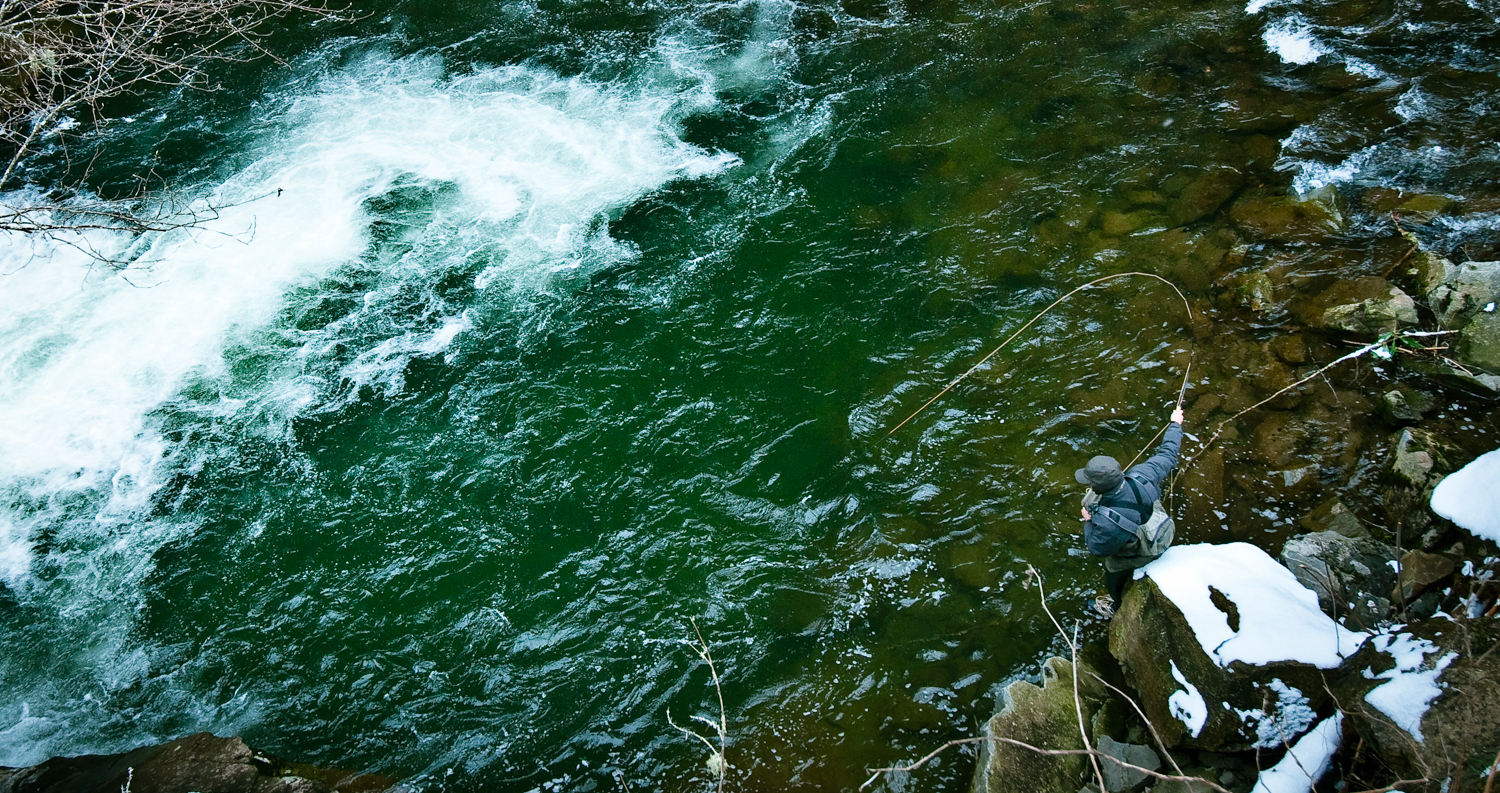
By Bob Reece
As winter provides its deepest chills, most surface activity fades.
Food items for trout become almost strictly subsurface and the size of those offerings in the drift typically decreases. There are currently a plethora of subsurface patterns available in the world of fly fishing for trout. This list is not intended to look down on or exclude any in particular. It is however, made up of patterns that have consistently brought fish-to-net during the winter months and beyond.
Pat Dorsey’s Top Secret Midge:
The Top Secret Midge is Pat’s go to small midge for tough trout. The slim profile, realistic segmented body and emerging wing produce a life-like midge emerger. It is tied on a Tiemco 2488 which increases its hook-ability especially in small sizes. He ties the Top Secret down to a size 26 and it’s my go-to bug in the winter months. The Glamour Madeira wing adds a dash of flash which attracts nearby fish.
Landon Mayer’s Mini Leech:
Landon designed the Mayer’s Mini Leech to match the small freshwater leeches that trout feed on in freestone rivers, tail waters, and still waters. With the micro pine squirrel attached only near the eye of the hook, the extending material will constantly move in addition to the ostrich herl collar. This fly is also versatile in different disciplines; you can dead drift it as a nymph, swing it as a nymph, trail it behind a larger streamer using a strip retrieve.
Casey Dunnigan’s Clearwater Emerger:
Dunnigan’s Clear Water Emerger was designed for the spring and fall transitional phases from baetis to midges and vice versa. With that in mind, the glass bead on this fly was designed to cover the other transitional phase of emergence in both mayflies and midges. This fly is tied in a size range of 18-22. Casey most commonly fishes the size 22 as midges are very small and that broadens the chances of catching more fish. It is a very effective pattern throughout the year.
Pat Dorsey’s Mercury Midge:
The Mercury Black Beauty is a variation of Pat’s original Black Beauty that surfaced in the early 1990’s. The Mercury version incorporates a glass bead that simulates the gas bubble affect in emerging midges. The bead becomes a trigger and entices fish to eat it as a result of the luster in the thorax area, which imitates the trapped air in the thorax. It fishes well in a wide range of sizes from size 18-24.
The Good Old Days Are Back
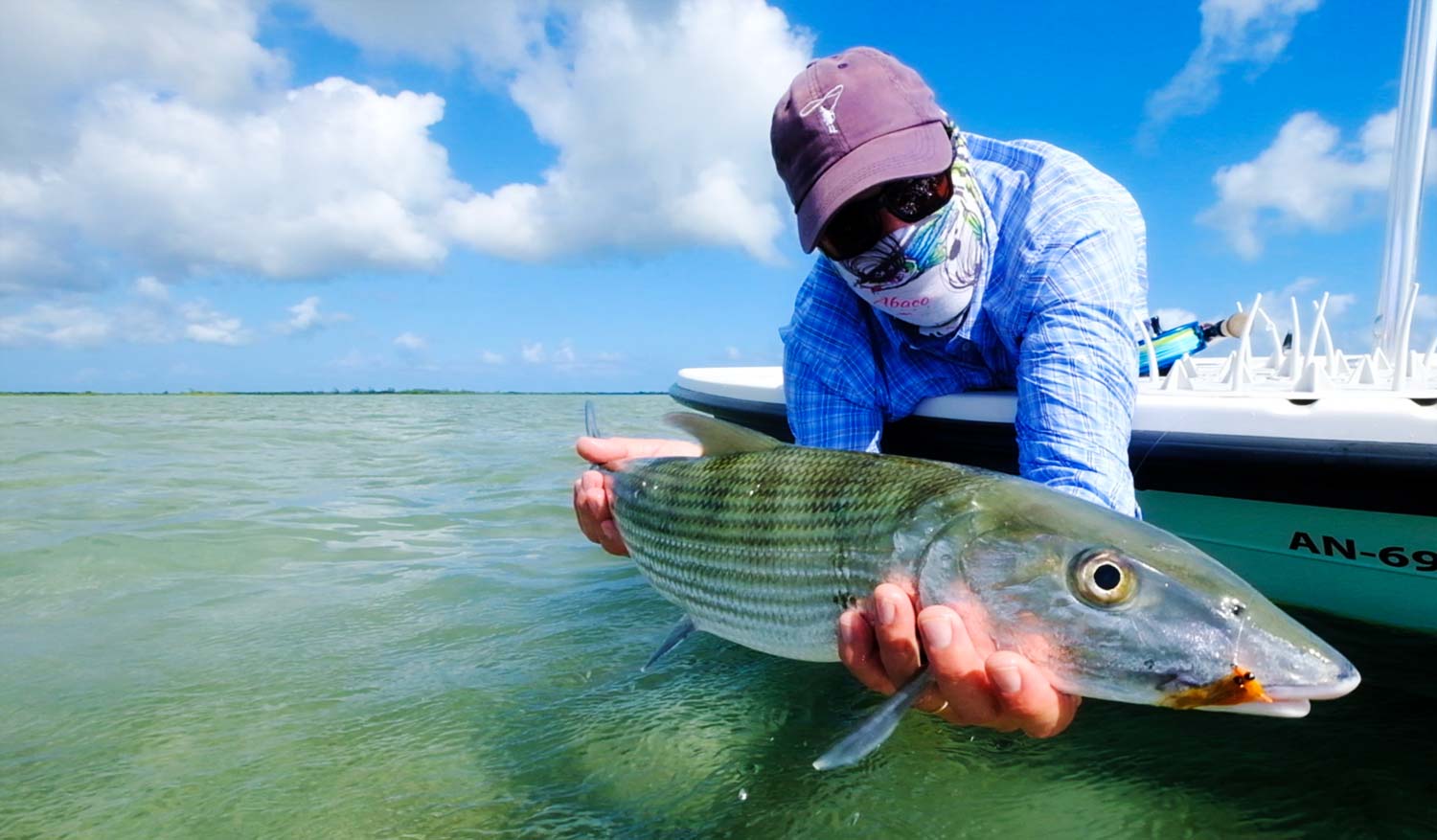
By Louis Cahill
I thought maybe you could use a little good news for Christmas.
Fly anglers have become pretty used to bad news where fisheries and conservation are concerned. It seems everywhere you look fisheries are in decline. From steelhead rivers in the Pacific North West to the Florida Everglades and a host of great water in-between, as well as many fisheries around the globe. It’s easy to believe we are watching the inevitable decline of fishing as we know it.
I’m not always so positive about it myself. I have said many times that I feel fortunate to experience the outdoors in a way that future generations will likely not. I don’t know if you can call that pessimistic. It’s a glass half full outlook, but it’s still only half a glass. At any rate, the last year has given me cause for hope. I am actually watching a fishery get better and I couldn’t be more thrilled.
I’m speaking specifically of South Andros in the Bahamas. South Andros is kind of my home water. I’ll fish there five weeks this season and I can’t say I spend that many days a year on the river that runs by my house. It has been my favorite place to fish for over a decade and in the last twelve months I’ve seen a change.
It has been an incredible big fish season for bonefish. I can’t remember a time in ten years when I have seen as many seven to ten pound fish on the flats. I was there with a group just this month and it seemed that someone landed a fish in that range every day. Even me. In fact, earlier in the year, I hooked the biggest bonefish I’ve ever seen. We got a good look at it, even though I didn’t land it. My guide estimated it at fifteen pounds.
Permit sighting are up as well. South Andros is not thought of as a permit fishery but
Read More »Add A Little Life To Your Flies
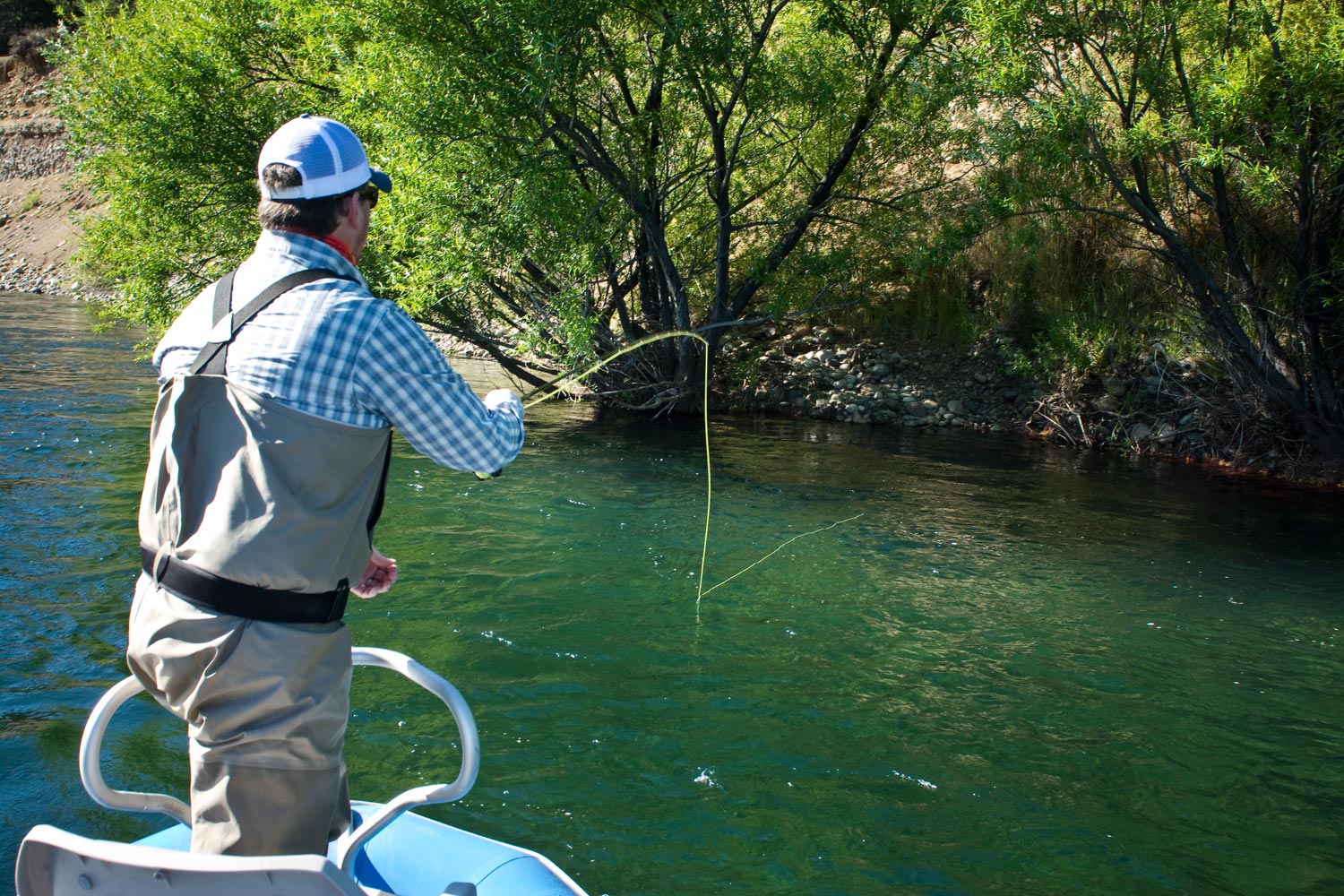
“TWITCH, TWITCH, STOP!”, EXCLAIMS MY GUIDE, EDUARDO.
I’ve heard these words all week and now it’s just become second nature for me as soon as my dry fly hits the water. I have to admit though, it’s been extremely effective.
We’re taught as newbies to focus on presenting our fly on a drag free, dead drift and that’s great. It’s good to start with the fundamentals. It’s one of many pieces of the puzzle that sets a foundation for us to build from as we progress as fly anglers. Sometimes the situation calls for a little persuasion. A little twitch, jiggle, shake, or twerk is just want we need in order to entice a strike.
Movement helps imitate life. Think about it for a second. How often do you
Read More »